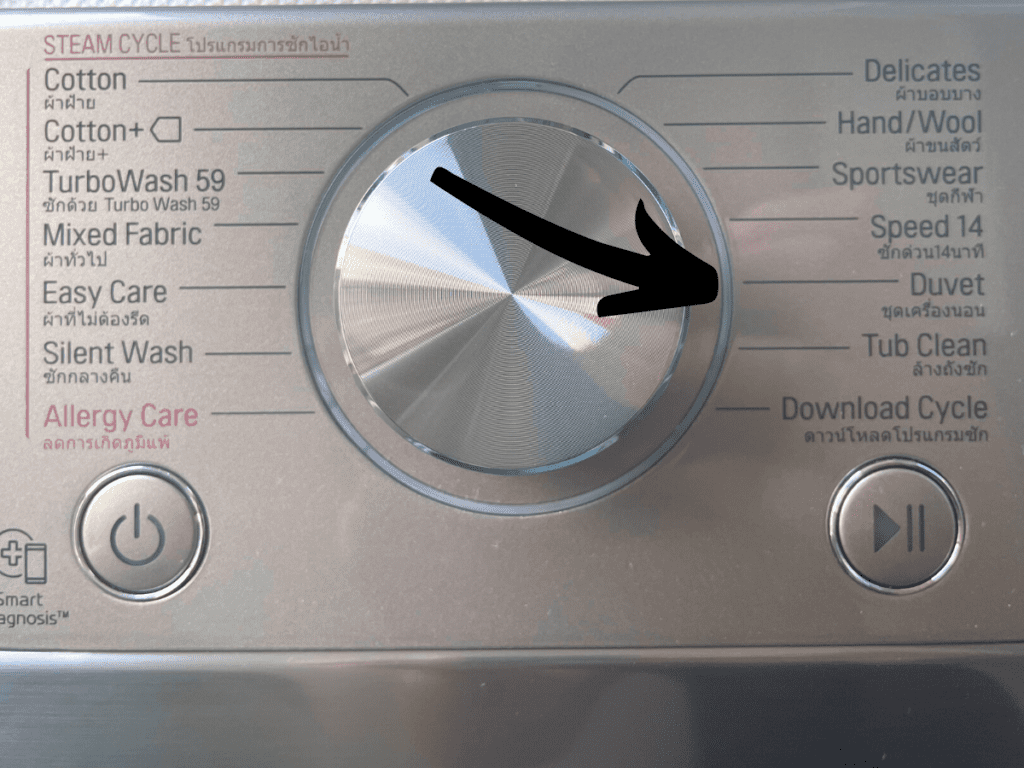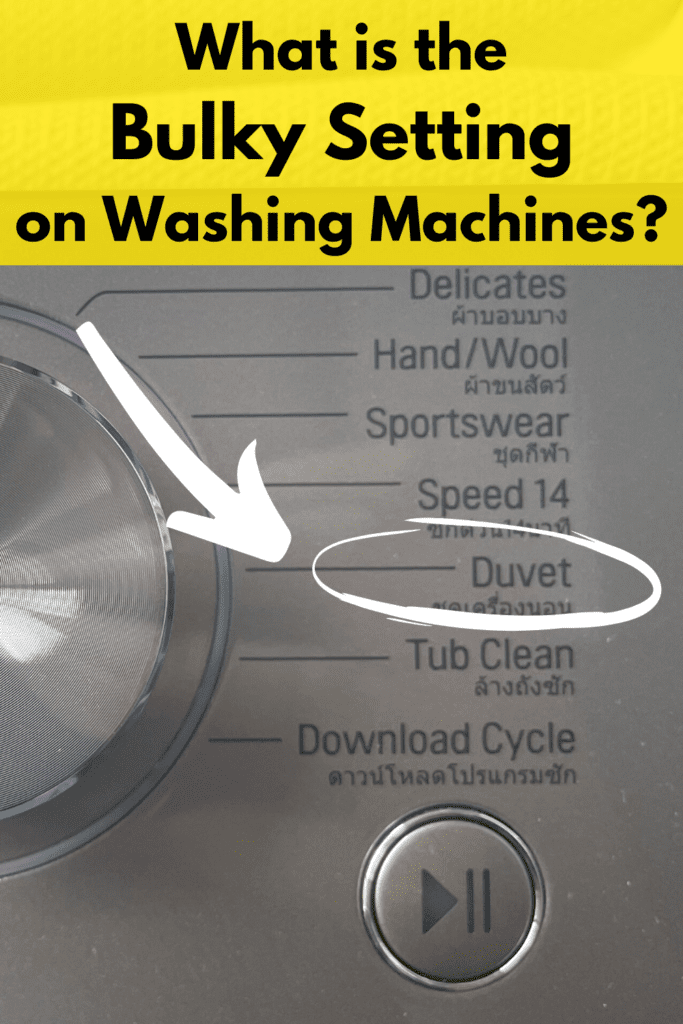Of all the different settings on the washer, the bulky setting is perhaps the most obscure and least used.
You could go on using the washer for years without stopping for once to consider the bulky setting.
So what is it, and why is it even there?
The bulky setting on washers is for bulky items that take up space and cannot be washed in the same load as other clothes.
These bulky items include blankets, towels, quilts, comforters, bath mats, and sleeping cases.
The bulky setting uses more water and gentler spinning than other cycles.
But how would you use it? Do you cram a few blankets and a comforter together and hope the washer can sort things out on its own?
Of course not.
Read more to find out about the bulky setting on washers and when to use it.
What is the Bulky Cycle?
The bulky cycle refers to the bulky items in the laundry that should be washed separately in their own load.
For example, suppose you have a blanket. In that case, you can’t possibly squeeze it into the same load as your work clothes, activewear, and denim pants.
For one thing, there’s not enough room in the drum for all of these items.
Secondly, the high agitation and fast spinning of the drum under regular cycles can be problematic, with a bulky blanket inside being tossed around. It could cause the washer to lose balance or topple over.
A bulky cycle is gentler in terms of water agitation and spinning speed.
For example, when you place a blanket and a comforter in the washer, they will spin slowly and move a bit sluggish compared to how small laundry items spin.
The bulky setting also uses more water than average.
That’s because the thick material of the quilt or comforter needs extra water to penetrate the fabric, remove the stains, and flush out all traces of the detergent.
The Stages of the Bulky Cycle

To understand how the bulky cycle works, we need to go through the different stages of the cycle and see what happens to the bulky items in each stage.
As I said, this is a very special setting, or fringe setting if you like, that is used on special occasions.
The main stages of the bulky cycle are pre-wash, washing, rinsing, and spinning. These are similar to other cycles on the washer, but they’re not similar at all under the surface.
Pre-wash
This first stage starts immediately after you push the Start button. Since the washer needs to fill the tub with plenty of water, the pre-wash could take anything from 20 to 25 minutes.
During that time, the washer will balance the load to ensure that all the bulky items are sitting comfortably and their weight is distributed well inside the tub.
Then water jets mixed with the detergent, stain remover, and fabric softener start spraying the bulky laundry.
When the water levels reach their mark, the washer will let the laundry sit in the water for up to 10 minutes to break any stains and let the water penetrate the thick fabrics.
Washing
During the washing cycle, the tub agitates the water at low speeds. There are no jerky movements or violent tossing of the laundry from one side to the other.
Instead, the laundry is handled gently with a few mild water agitations here and there.
The washing stage takes between 10 to 15 minutes. Then the soapy water is drained.
Rinsing
The rinsing stage takes up not just more time and a few iterations but also more water. Each rinsing iteration uses as much water as the washing stage.
On average, the washer will rinse the bulky laundry between 3 to 4 times, depending on the brand and model of the washer.
Again, the rinsing stages under the bulky setting is a gentle process with fewer agitations and reduced speed to keep the tub and the washer as a whole steady and balanced.
The rinsing stage would take up to 25 to 30 minutes on average in many washers with this setting.
Spinning
The spinning stage, much like the washing and rinsing stages, puts the integrity of the laundry front and center. When dealing with bulky items, any sudden jerking of the bulky items can cause the washer to lose balance or move around.
The spinning speed is usually the lowest and wouldn’t go above 800 rotations per minute (RPM). However, some washers limit the spin speed to no more than 600 RPM.
The spinning stage also could take from 25 to 30 minutes to compensate for the low RPM. Still, the bulky items would come out of the washer rather wet.
That’s due to the thick fabrics and the amount of water they retain.
When to Use the Bulky Setting
The bulky setting is not for everyday use. In fact, it’s not recommended to use it except for heavy items such as blankets, mats, rugs, quilts, and similar pieces.
The bulky setting uses more water and energy than other settings on the washer. It also takes more time on average.
So if you use it to wash small laundry items such as jeans and blouses, you won’t get the same level of cleanliness as with other settings.
How to Use the Bulky Cycle
To use the bulky cycle, make sure to wash more than one bulky item in the same load to balance the washer and prevent sudden lurching.
First and foremost, make sure that the item is washable before you dump it into the washer. For items that say dry clean only on the tag, you should take those to the dry cleaner.
Don’t overload the tub with too many bulky items. This would impact the washing process. For example, if you have a large comforter, it could make up a single load on its own.
Conclusion
Use the bulky setting to wash towels, bed sheets, quilts, comforters, bath mats, and washable rugs. This setting uses a lot of water and takes up more than 2 hours on average.
I’ve created a comprehensive guide on how to use all the settings on your washing machine that may interest you to read next.


I’m an expert wardrobe organizer and a bit of a clean freak. I created this website and its YouTube channel to share practical guides about laundry and organizing. My teachings have been featured in multiple large news publications, and I’ve self-published two wardrobe organizing books and an entire course on the subject.

